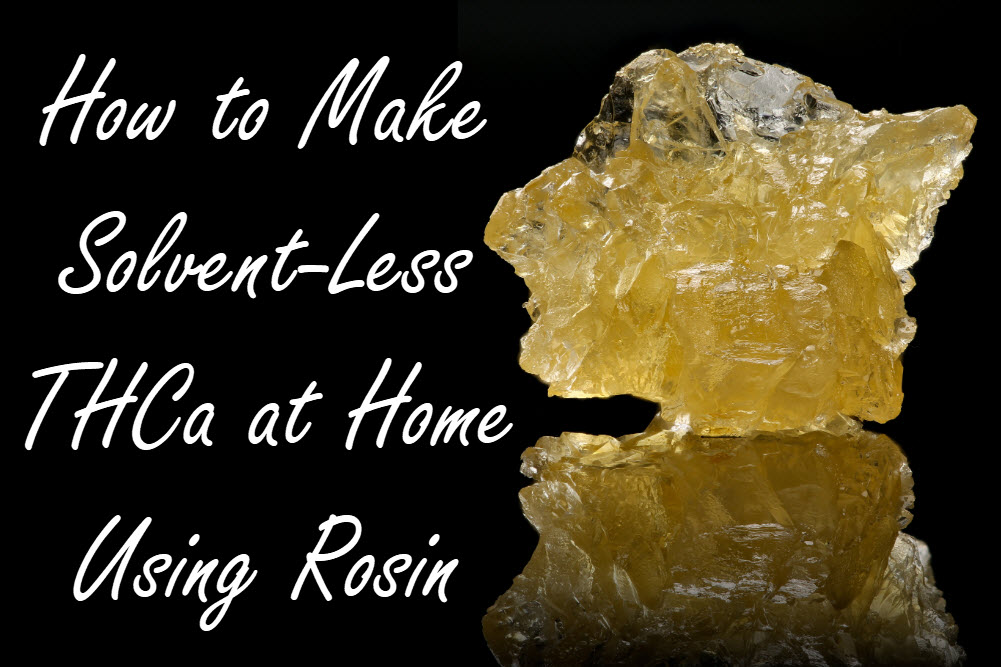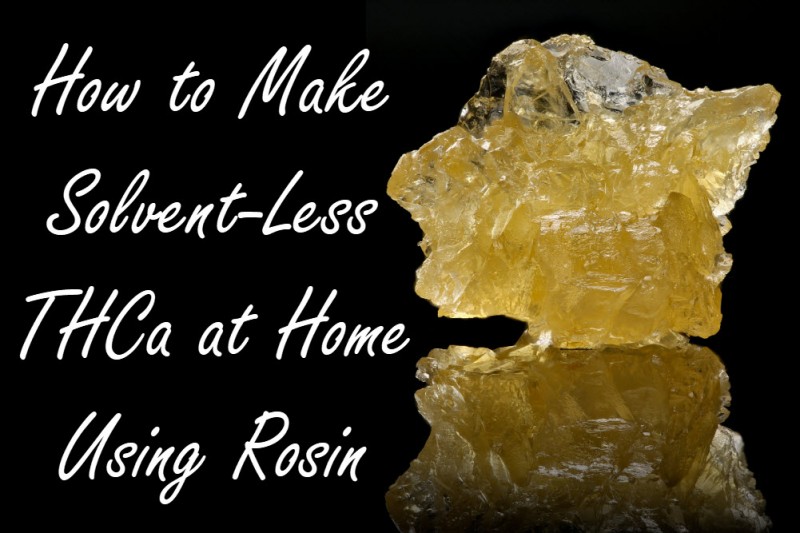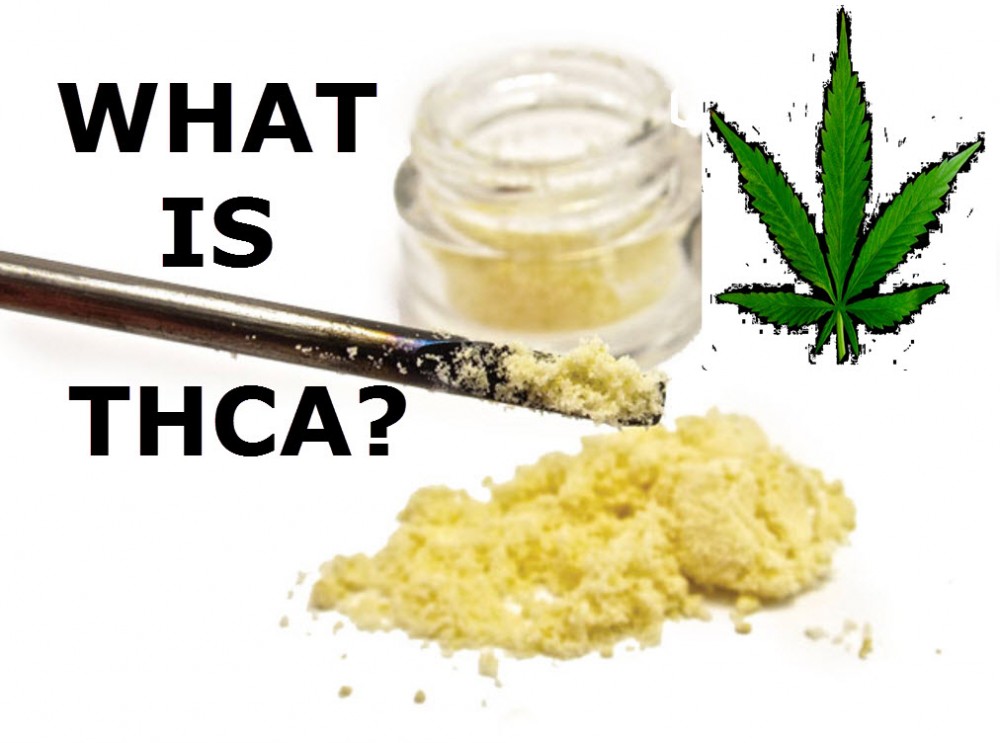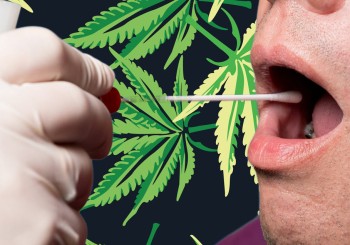How to make solvent-less THCa at home using Rosin

Why make an isolate? For the average consumer, having an isolate is probably not a priority. After all, isolates are typically used for making infusions, whether for foods or other wellness products. The average consumer, unless they are making edibles, would have no practical reason to have isolates on hand.
Of course, if we’re talking about making edibles at home, using THCa crystals would allow you to use precision with your infusions. You’ll be able to measure out the amount of THC in grams, allowing you to create uniformed experiences with your edibles.
Additionally, for those who use cannabis as medicine, an isolate can help you establish controlled doses, which could help in creating an effective medical treatment for your condition.
There are benefits to making your own isolates at home, however, you’d need a reason to make it. Or perhaps, you’re simply a closet alchemist that likes to see shit transform. If so – hold on to your hats because we’re going to squeeze the shit out of some weed at high temperatures!
The Benefit of Rosin for THCa
Isolates are nothing new. There are several different ways to go about extracting isolates, which utilize chemical processes and a myriad of other techniques. While the end result is virtually the same, trace elements of the solvents used to separate the THC from the “goop-of-cannabinoids” could be present. I’m not saying they are present, but the possibility is always there.
On the other hand, if you were to eliminate the issue with “solvents” altogether, then you don’t have to worry about some rogue agent in your isolates, eyeballing you like some demented psychopath.
With Rosin, you don’t use solvents whatsoever. This typically means that you get a lower yield when it comes to the final product, however, in essence, it’s the “purest form” of obtaining those precious oils.
Irrespective of this, Rosin is one of the few techniques that the average consumer would be able to do at home. There are some upfront costs, and the amount of weed you’ll be using will be a “good amount” – however, once you have all the tools and know the technique, you have the ability to make your own cannabis oils and isolates – which is fan-fucking-tastic!
I’m interested! So what do I need?
Considering that we’ll be doing Rosin, you’ll obviously need a Rosin Press. While nobody has tried to do this with a hair straightener, I doubt the PSI and temperature settings of a cosmetic device would be able to do the job on turning wax into an isolate.
For this, you’ll need to dish out anywhere between $300-$500 or build your own. There’s plenty of places online where you can find the tutorials on how to build your own Rosin Press at home. If you’re like me and don’t have access to power tools and lack the experience in building anything more complex than a sandcastle, then you should look online for a few pre-made options. There’s plenty of companies building these devices at various price tags.
Once you have the Rosin Press, you’ll need some good weed. A 14-gram bag of weed will deliver roughly 3 grams of wax/budder. That will eventually be reduced slightly in weight, but you should end up with a few grams of isolate at the end of the process.
Understanding this, you can calculate the amount of weed you’ll need to use depending on the amount of isolate you’ll want at the end of the process. A 25% conversion is considered a “good press”. Keep that in mind when you’re making your calculations.
You’ll also need parchment paper and micron (25-27) filter bags.
It’s important that your Rosin Press has temperature control, as well as having manual control. Air pressure control typically doesn’t have the finesse to get the job done right.
Let’s begin…
The first thing you’ll want to do is turn the weed into budder. To do this, place the buds into the filter bags, and wrap them like a present. Then, place some parchment paper in between the plates and press down.
You’ll want to make a buddery consistency for this to be most effective. Once you have extracted the concentrate, remove the filter bags (containing the pressed weed), and collect all the wax.
Take all of the budder and place it inside a new parchment paper. Make sure to leave a bit of space on the edges in order to allow the oils to drip off. Fold it, as if you are wrapping a Christmas present.
Now, heat up your rosin to roughly 80-90° C and apply some pressure to the package. You’ll notice some oils and terpenes boil off. Be sure to do it for about 30 – 60 seconds, as to not burn the wax.
Then, lift the press and check on the slab of wax. If you deem the package fit for another go, raise the temperate roughly 10° more and give it another press for 30 seconds.
After the second press, remove the wax (which should be lighter) and place it in a new parchment paper. Collect the oils (those are terpenes and other cannabinoids).
Then, go back and do a couple more presses, increasing the temperature of 10° at a time, while reducing the time-pressed by 5 seconds.
Eventually, virtually all of the oils, plant fats, terpenes and cannabinoids will boil off, leaving you with a slab of THCa.
In the next article, I’ll explain why you’re left with THCa, even though you applied heat to the molecule, which should technically activate it. However, that’s for another day.
Try this at home
I know that the vast majority of the people won’t try this at home, but for those of you interested in taking your cannabis game to the next level, making your own THC isolate at home is definitely a worthy pursuit.
THCa AND WHAT IS IT? READ MORE...
WHAT IS THCA, AND HOW DO YOU USE IT, CLICK HERE.
OR..
WHAT ARE CORRECT CBD TO THC RATIOS, CLICK HERE.








